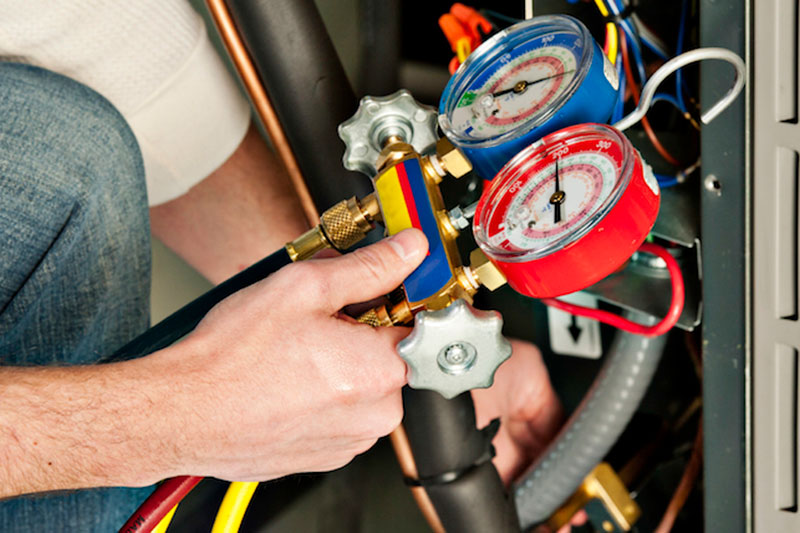
You might not think much about how your air conditioner functions, but it requires refrigerant to keep your residence fresh. This refrigerant is subject to environmental regulation, as it contains chemicals.
Subject to when your air conditioner was put in, it may use R-22, R-410A or R-32 refrigerant. We’ll review the differences and which air conditioner refrigerants are being phased out in Wyandotte, in addition to how these phaseouts affect you.
What’s R-22 and Why Is It Discontinued?
If your air conditioner was installed before 2010, it probably uses Freon®. You can learn if your air conditioner contains it by reaching us at 734-284-1224. You can also look at the name plate on your air conditioner condenser, which is located outside your residence. This sticker will contain details on what model of refrigerant your AC has.
Freon, which is also called R-22, has chlorine. Scientists consider this chemical to be damaging to the earth’s ozone layer and one that results in global warming. The Environmental Protection Agency, which controls refrigerants in the United States, barred its creation and import in January 2020.
I Use an Air Conditioner with R-22. Do I Need to Get a New One?
It varies. If your air conditioning is operating as designed, you can continue to run it. With regular air conditioner maintenance, you can expect your air conditioning to last around 15–20 years. However, the Department of Energy notes that substituting a 10-year-old air conditioner could save you 20–40% on yearly cooling bills!
If you don’t replace your air conditioner, it may cause an issue if you require air conditioning repair down the road, specifically for refrigerant. Repairs could be higher-priced, since only limited amounts of recycled and reclaimed R-22 is available.
With the phaseout of R-22, a lot of new air conditioners now have Puron®. Also called R-410A, this refrigerant was made to keep the ozone layer strong. Since it requires a different pressure level, it doesn’t work with air conditioners that need R-22 for cooling.
However, Puron still has the potential to create global warming. As a consequence, it may also sometime be discontinued. Although it hasn’t been disclosed yet for residential air conditioners, it’s expected sometime this decade.
What Refrigerant Will Replace R-410A?
In preparation of the phaseout, some companies have initiated using R-32 in new air conditioners. This refrigerant is classified low for global warming possibility—around one-third less than R-410A. And it also decreases energy consumption by about 10%, according to the Intergovernmental Panel on Climate Change’s Fourth Assessment Report. That’s savings that could be forwarded on to you through your cooling costs.
Gee & Missler Heating & Air Conditioning Can Provide Support with All Your Air Conditioning Needs
In summary, the changes to air conditioner refrigerant probably won’t concern you a whole lot until you have to have repairs. But as we went over previously, refrigerant-related repairs might be more expensive because of the low levels that are accessible.
Not to mention, your air conditioner typically breaks down at the worst time, often on the warmest day when we’re experiencing many other requests for AC repair.
If your air conditioner requires a discontinued refrigerant or is aging, we suggest upgrading to a modern, energy-efficient air conditioner. This ensures a stress-free summer and can even lower your electrical bills, especially if you select an ENERGY STAR®-rated air conditioner. Plus, Gee & Missler Heating & Air Conditioning provides many financing programs to make your new air conditioner work with your budget. Contact us at 734-284-1224 to begin now with a free estimate.


